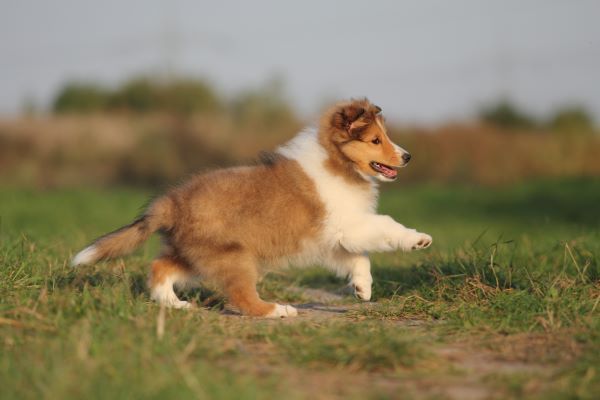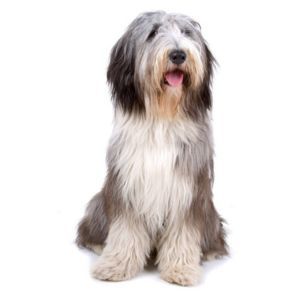Shetland Sheepdog
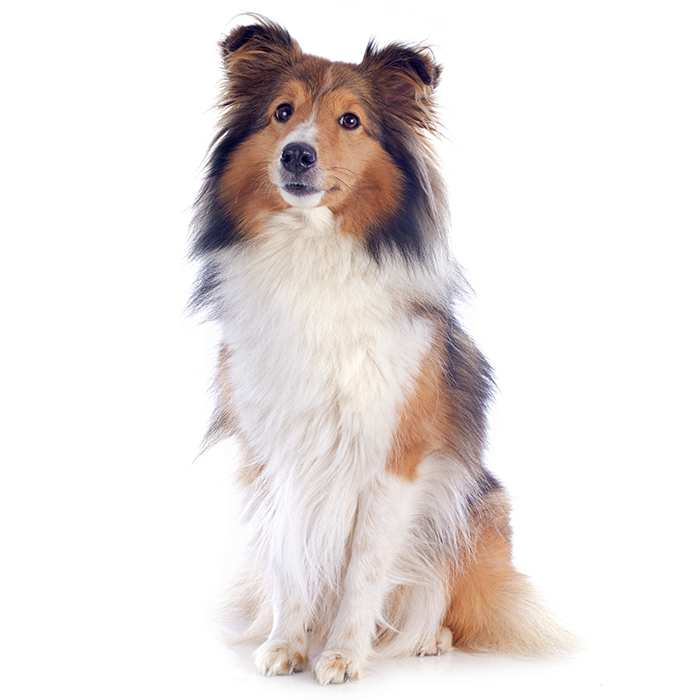

| Recommended for | Active households, families with children, and first-time dog owners |
| Breed Classification | Herding Group |
| Other names | Sheltie, Shetland Collie |
| Lifespan | 12 to 14 years |
| Size | Small to medium |
| Temperament | Friendly, loyal, protective |
| Intelligence | High; quick to learn, responsive to training |
| Tendency to bark | Moderate; alert and vocal, barks when excited or as a watchdog |
| Maintenance Level | Medium grooming needs; low food costs |
| Health Risk | This breed has an around average probability of having health issues in its lifetime, hence it is one of the more affordable breeds to insure. |
Insuring a Shetland Sheepdog?
Get our award-winning Nose-to-Tail Cover with up to $30k annual benefit limit, up to 90% of eligible vet bills back, and no sub-limits.
Get a quick quote
Is this breed right for you?
Try our breed selector quiz to find out your best matching breed!
Insuring a Shetland Sheepdog?
Get our award-winning Nose-to-Tail Cover with up to $30k annual benefit limit, up to 90% of eligible vet bills back, and no sub-limits.
Get a quick quote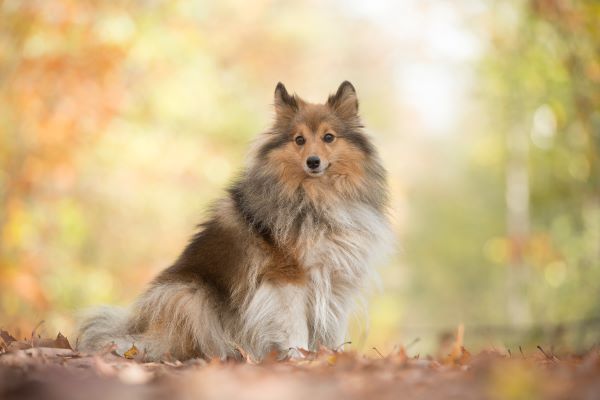
Breed history of Shetland Sheepdogs
The Shetland Sheepdog was developed several hundred years ago as a working dog for the farmers of the Shetland Islands of Scotland. The rugged wind-swept landscape meant a hardy and dependable dog was required to herd and guard flocks of sheep in harsh weather. The Shetland Sheepdog, much like the diminutive pony that is named for the same place, developed to be small in stature but determined in its nature.
Despite the similarity in appearance, the breed is not just a small sized Rough Collie. The ancestry of the Shetland Sheepdog is much more complex, comprising a number of dog breeds, including the Rough Collie, the Pomeranian, the King Charles Spaniel and perhaps the Border Collie. It is also thought that the now extinct Greenland Yakki, a heavy-coated and strong working dog, is also one of the Shetland Sheepdog’s many ancestors.
Because of the Shetland Islands’ isolation from the Scottish mainland, the Shetland Sheepdog remained solely a working dog right up until the early 1900’s. When the breed first appeared in England around 1908, it was exhibited at dog shows under the name “Shetland Collie”. However, Collie breeders objected to this name, leading to the official renaming of the breed to “Shetland Sheepdog” in 1914.
The breed quickly gained popularity in England and soon thereafter was imported to other countries, including the USA, being officially recognised by the American Kennel Club (AKC) in 1911. The breed was first introduced to Australia in 1936, and today is a popular companion animal and participant in various canine sports and herding trials.
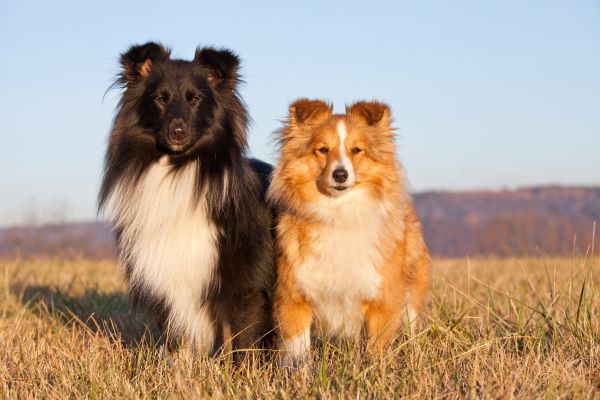
Physical description of Shetland Sheepdogs
The Shetland Sheepdog is a small to medium-sized breed with a sturdy, agile frame, narrow muzzle, intelligent, almond-shaped eyes and an alert expression. Its ears are triangular and semi-pricked, with the tips folding forward, contributing to its expressive face.
The breed has a thick, weather-resistant double coat, with a dense, long outer coat and a soft undercoat that comes in various colours, including sable, tricolour, and blue merle, with white markings. It has a luxurious mane around its neck and a plume-like tail that is carried low when relaxed, and rises with enthusiasm when the dog is alert or at play.
The Sheltie closely resembles a small Rough Collie, and many people mistake them for miniature versions of Collies. However, they are a separate breed with their own distinct characteristics.
| Weight range | 6 to 12 kg |
| Height range | 33 to 41 cm |
| Colours | Sable, tricolour, blue merle, and occasionally white |
| Coat length | Long; a dense double coat with a soft undercoat |

Shetland Sheepdog personality and temperament
The Shetland Sheepdog is an affectionate, loyal and playful dog with a larger-than-life personality. Highly social and people-oriented, they thrive on interaction and form deep bonds with their family members. Their alert and enthusiastic nature makes them ideal companions for active households that can offer plenty of mental and physical stimulation. They enjoy daily walks, playtime, and interactive activities, and they thrive in homes with other pets and children. Their playful energy ensures they are always ready for an adventure, but they are also calm and gentle when cuddling up with their loved ones.
Intelligent, excitable, and highly energetic, Shelties are working dogs with a keen enthusiasm for exercise. Best suited to homes with a large backyard, the breed is a popular choice for active families with plenty of space for running and exploring. However, they can adapt to smaller living spaces and even apartments, as long as they obtain sufficient exercise.
Despite their energy, Shetland Sheepdogs are also independent enough to entertain themselves and remain calm when left alone for short periods. However, they do require a great deal of human contact to remain happy. If left alone for any extended period of time, the breed tends to develop separation anxiety, which can cause them to bark, become depressed and even become aggressive towards other animals.

Shetland Sheepdogs with kids and other pets
The Shetland Sheepdog is an excellent companion for families, particularly those with children. Playful, affectionate, and gentle, they form strong bonds with kids and love being involved in family activities. Their friendly and patient disposition makes them great playmates, with their small size making them less intimidating for young children.
Their herding instincts can sometimes make them a bit protective, especially with younger children and, like many working dog breeds, they can be snappy if prodded and pestered too much. Hence, they do best in homes where children understand how to treat them gently and respectfully, and playtime is supervised.
When it comes to other dogs, Shelties are typically friendly and adaptable, rarely showing aggression. When meeting another Shetland Sheepdog in a public place, they will typically become playful and show a great deal of friendliness rather than try to assert their dominance. Their social and outgoing nature makes them well-suited for multi-dog households; however, their herding instinct may cause them to try and “herd” smaller animals like cats or rabbits. Early socialisation is essential to ensure they interact peacefully with other pets and learn appropriate behaviours.

Shetland Sheepdog training and exercise
The Shetland Sheepdog is a highly energetic and active breed that thrives on regular physical exercise and mental stimulation and requires daily walks, playtime, and interactive activities to stay happy and healthy. Engaging in games like fetch, agility training, and running around in the yard will help meet their physical exercise needs. Ball games and a long walk at least daily is a must for their peace of mind, while a good run once in a while is even better. Without sufficient activity and mental stimulation, they can become restless, anxious, or develop undesirable behaviours.
Shetland Sheepdogs are deeply bonded with their family members and enjoy close interaction. They thrive in environments where they can be actively involved in daily activities,and are not fond of being left alone for extended periods and may become anxious or bored if neglected. Regular attention, love, and socialisation are crucial to ensuring their emotional well-being and preventing destructive behaviours.
Training a Shetland Sheepdog requires patience and consistency. They are intelligent dogs that enjoy learning and are eager to please, making them highly trainable. Positive reinforcement works best, as they respond well to rewards and encouragement. Early socialisation is important to ensure they grow into well-behaved and well-rounded companions.
| Energy level | High |
| Exercise requirements | High |

Shetland Sheepdog feeding and nutrition
Proper nutrition is essential for maintaining the health, energy, and vitality of the Shetland Sheepdog. Because of their energetic and active nature, they require a well-balanced diet rich in high-quality protein, healthy fats, and essential nutrients. This helps support their lean muscular build, shiny coat, and overall health.
As Shetland Sheepdogs age, their nutritional needs will change. Puppies require nutrient-dense food to support their rapid growth and development, while adult dogs benefit from balanced meals that provide sustained energy without causing weight gain. Senior Shetland Sheepdogs may need lower-calorie food with joint-supporting supplements to address aging and help maintain mobility. Adjusting their diet as they age ensures that they stay healthy, active, and at a healthy weight throughout their lives.
Managing calorie intake is vital to avoid obesity, which can lead to joint strain and other health problems. Regular mealtimes, portion control, and monitoring their weight are important for maintaining their health. Regular veterinary check-ups can help in identifying and addressing any nutritional concerns early.
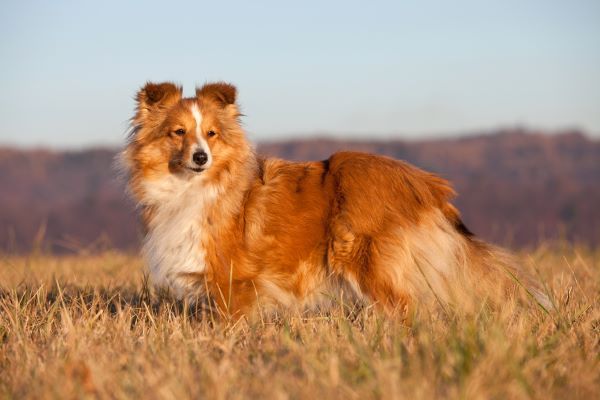
Shetland Sheepdog care and grooming
The Shetland Sheepdog has a double coat, consisting of a dense undercoat and a longer, coarser outer coat, and regular grooming is essential to maintain its health and appearance. Brushing a few times a week helps remove loose hair, prevent mats and tangles, and maintain a neat appearance. Shetland Sheepdogs are moderate shedders that tend to shed seasonally. Brushing is a key part of their care routine to keep shedding under control and their coat healthy.
To maintain the Shetland Sheepdog’s characteristic look, regular trimming around the paws, ears, and face may be necessary. However, the coat should not be clipped, as this can interfere with its natural texture and insulation properties. Instead, hand-stripping or professional grooming can be done to preserve the coat’s beauty and functionality.
Bathing should be done as needed, typically every few months or when the dog becomes particularly dirty. Nail trimming is important to prevent overgrowth, and the ears should be checked and cleaned regularly to avoid ear infections, especially due to their thick fur, which can trap moisture and debris. Dental care in the form of routine teeth brushing and professional cleanings will help prevent tartar buildup and ensure good oral health.
Health issues for Shetland Sheepdogs
- Progressive Retinal Atrophy (PRA) is an inherited eye disorder that can cause progressive vision loss and eventually blindness. Regular eye exams can help detect this condition early, and genetic testing for breeding can help reduce its incidence.
- Hip Dysplasia, although less common in Shetland Sheepdogs, can still occur. This condition involves abnormal development of the hip joint, leading to pain, stiffness, and potential arthritis. Early detection and maintaining a healthy weight can help minimize its impact and improve quality of life.
- Hypothyroidism occurs when the thyroid gland doesn’t produce adequate amounts of thyroid hormone. Relatively common in Shetland Sheepdogs, symptoms include weight gain, lethargy, and coat changes like thinning or dull fur. The condition is managed with lifelong medication and dietary adjustments to regulate hormone levels.
- Collie Eye Anomaly (CEA) is a genetic eye disease that can cause blindness. CEA affects the retina and can lead to retinal detachment or other serious issues. Early detection through eye exams is important for managing this condition. Like all collie types, the Shetland Sheepdog is susceptible to this condition.
- Von Willebrand’s Disease, fairly common in the Shetland Sheepdog, is a hereditary bleeding disorder that causes clotting problems in the blood. When a dog has too few platelets, clotting fails to occur when the dog suffers a wound or injury. If left untreated, the disease can lead to excessive bleeding and even death.
- Cushing’s Disease occurs when the adrenal glands produce too much cortisol, leading to symptoms such as excessive thirst, increased urination, and weight gain. Cushing’s disease can be managed with medication and regular veterinary check-ups.
- Dental Disease can occur in Shetland Sheepdogs, particularly tartar buildup, gum disease, and tooth loss. Regular dental care, including daily brushing and professional cleanings, is important to maintain oral health.
- Shetland Sheepdogs can suffer from environmental and food-related allergies, with symptoms including itching, redness, and frequent scratching or licking. Identifying and managing these allergies with veterinary care is essential.
Not all conditions are covered by Pet Insurance. For details of Bow Wow Meow Pet Insurance cover, refer to the Product Disclosure Statement.
What do Shetland Sheepdog owners claim for the most?
- Lymphoma
- Wound
- Protein-losing Enteropathy (ple)
- Skin Allergy
- Mass Lesion
Thinking about insuring a Shetland Sheepdog
Thinking about insuring a Shetland Sheepdog
Learn moreThinking about insuring a Shetland Sheepdog
Learn moreFree engraved pet ID tag on sign up3
Customer Satisfaction
21 day cooling off
Easy to use Pet Portal

GapOnly® in vet claims
MORE INFORMATION
Shetland Sheepdog Club of NSW Inc: http://www.sheltieclubnsw.com/
Shetland Sheepdog Club of Victoria Inc: https://sheltieclubvic.weebly.com/
Shetland Sheepdog Club of W.A Inc: https://www.shetlandsheepdogclubwa.com/
Shetland Sheepdog Club of Queensland: https://www.sheltieclubqld.com/
American Shetland Sheepdog Association (ASSA): ttp://www.assa.org/

